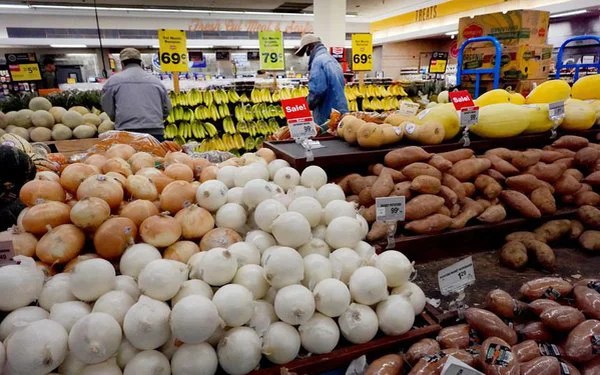According to the WSJ, US consumer retail spending had a change in September, amid high inflation and interest rates. Specifically, spending on essential items, such as food, increased sharply, while discount items such as gasoline or furniture were no longer as sought after as before.
The country’s total retail sales in September were not much different from the previous month, while this figure in August increased 0.4 percent from July, the US Commerce Department said.
Unlike government inflation data, retail sales are not adjusted for inflation. As a result, some fluctuations in spending reflect a change in price rather than the total amount spent.

According to the US Bureau of Labor Statistics, the US consumer price index CPI in September increased by 8.2% over the same period last year. Although still standing at a high level, this index has decreased slightly by 0.1% compared to August. This is also the third consecutive month that the US consumer price index has slowed down compared to the previous month.
This contributed to restraining the general increase in commodity prices in the US. However, excluding food and energy factors, the US core CPI still increased to 6.6% from 6.3% in August, thereby increasing pressure on consumers.
Retail spending by US consumers is showing a change in September, amid rising inflation and interest rates.
According to the WSJ, overall food prices in the US increased nearly 1% in September and increased about 11.2% over the same period last year. Rising prices cause consumers to spend more money when shopping or going to restaurants and bars. The spending plan accordingly must be reconsidered.
Prices of food consumed at home, mainly grocery products, rose 0.7 percent month-on-month and up 13 percent from a year earlier. In which, butter and dairy products recorded a record price increase of 32.3% compared to 2021. Scared supply is causing the price of this item in US supermarkets to skyrocket, at a faster rate than most all other foods. Avocado prices even hit $4.77 per pound, the highest level since 2017, according to Nielsen.
Besides, the price of flour and cereal products also increased by 24.2% over the same period last year, the fastest increase since 1978. Instant sausages increased 14.7% while fruits and vegetables increased by 14.7%. green vegetables increased by 10.4%.
The rise in commodity prices is bad news for many workers, as average American hourly earnings, adjusted for inflation, fell 0.1% month-on-month, and down 3% from the previous month. same period. For households that often go out to eat, the situation is even more difficult when the average food price at restaurants or cafes nearly doubled compared to the same period in 2021 and reached 91.4%. .
Butter and dairy products recorded a record price increase of 32.3% compared to 2021.
While food prices increased sharply, gasoline prices in the US tended to decrease. As of September, this is the third consecutive month that people in this country spend less on gasoline.
Previously, due to the skyrocketing gasoline price, even some southern areas recorded an increase of up to 8 USD/gallon, the state government immediately asked the refineries to reduce the price by shifting the price. switch to “winter blend gasoline” a month earlier instead of “summer blend gasoline”, which is more expensive due to less hazardous fumes.
After the Organization of the Petroleum Exporting Countries and its partners (OPEC+) announced a reduction of 2 million barrels of oil per day, the White House also ordered the release of an additional 10 million barrels of oil from the strategic reserve this month to protect consumers and promote energy security.
The WSJ said consumers felt more relieved when shopping for clothes, furniture, used cars and a number of other goods in September. The impetus came from lower supply chain pressures. In the heat, companies reduce the price of inventory discharge while the dollar helps reduce the price of imported goods. Americans also increased purchases at clothing stores as retailers launched deep discount promotions to push inventory.
While food prices increased sharply, gasoline prices in the US tended to decrease.
While the forecasted revenue growth of the shopping season later this year is roughly comparable to the pre-COVID-19 period in terms of value, according to US press, total goods consumption will still decrease due to inflation.
CNBC cited a Morning Consult survey that showed more than half of the Americans participating were concerned or very worried about keeping their spending within their holiday budget this year, 80% said they would be affected by inflation; 52% think it will be more difficult to meet spending needs during the holiday season this year.
It is known that the year-end holiday shopping season in the US often contributes up to 40% of the total annual revenue of retailers. Last year, sales in the US on this occasion increased by 14.1%, despite the impact of the COVID-19 epidemic. This year, this number is forecast to still increase, but somewhat more modestly.
By: WSJ, CNBC
Source: Vietnam Insider

